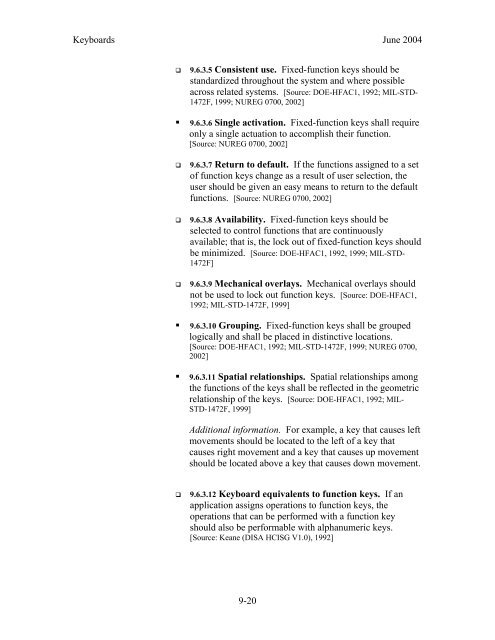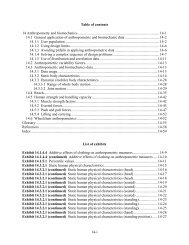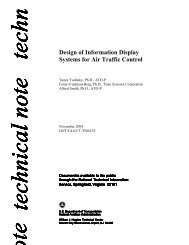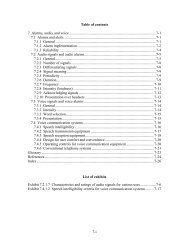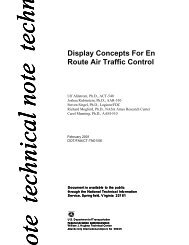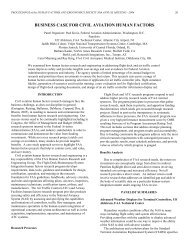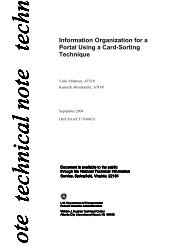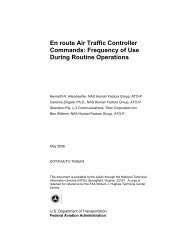Human Factors Criteria for the Design and Acquisition of ... - FAA
Human Factors Criteria for the Design and Acquisition of ... - FAA
Human Factors Criteria for the Design and Acquisition of ... - FAA
You also want an ePaper? Increase the reach of your titles
YUMPU automatically turns print PDFs into web optimized ePapers that Google loves.
Keyboards June 20049.6.3.5 Consistent use. Fixed-function keys should best<strong>and</strong>ardized throughout <strong>the</strong> system <strong>and</strong> where possibleacross related systems. [Source: DOE-HFAC1, 1992; MIL-STD-1472F, 1999; NUREG 0700, 2002]• 9.6.3.6 Single activation. Fixed-function keys shall requireonly a single actuation to accomplish <strong>the</strong>ir function.[Source: NUREG 0700, 2002]9.6.3.7 Return to default. If <strong>the</strong> functions assigned to a set<strong>of</strong> function keys change as a result <strong>of</strong> user selection, <strong>the</strong>user should be given an easy means to return to <strong>the</strong> defaultfunctions. [Source: NUREG 0700, 2002]9.6.3.8 Availability. Fixed-function keys should beselected to control functions that are continuouslyavailable; that is, <strong>the</strong> lock out <strong>of</strong> fixed-function keys shouldbe minimized. [Source: DOE-HFAC1, 1992, 1999; MIL-STD-1472F]9.6.3.9 Mechanical overlays. Mechanical overlays shouldnot be used to lock out function keys. [Source: DOE-HFAC1,1992; MIL-STD-1472F, 1999]• 9.6.3.10 Grouping. Fixed-function keys shall be groupedlogically <strong>and</strong> shall be placed in distinctive locations.[Source: DOE-HFAC1, 1992; MIL-STD-1472F, 1999; NUREG 0700,2002]• 9.6.3.11 Spatial relationships. Spatial relationships among<strong>the</strong> functions <strong>of</strong> <strong>the</strong> keys shall be reflected in <strong>the</strong> geometricrelationship <strong>of</strong> <strong>the</strong> keys. [Source: DOE-HFAC1, 1992; MIL-STD-1472F, 1999]Additional in<strong>for</strong>mation. For example, a key that causes leftmovements should be located to <strong>the</strong> left <strong>of</strong> a key thatcauses right movement <strong>and</strong> a key that causes up movementshould be located above a key that causes down movement.9.6.3.12 Keyboard equivalents to function keys. If anapplication assigns operations to function keys, <strong>the</strong>operations that can be per<strong>for</strong>med with a function keyshould also be per<strong>for</strong>mable with alphanumeric keys.[Source: Keane (DISA HCISG V1.0), 1992]9-20


